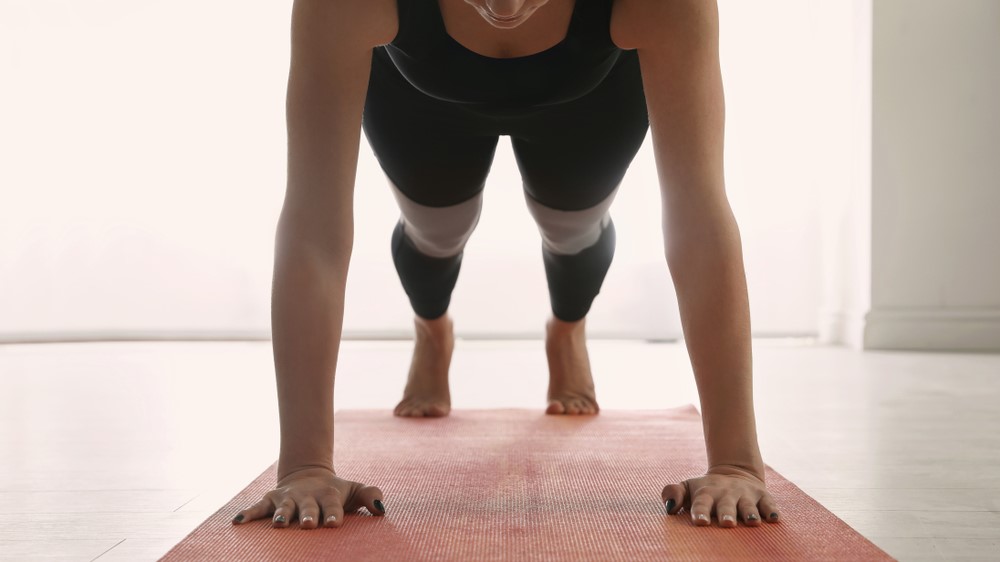How to do plank jacks — form, benefits and variations to try
Here’s how to do a plank jack and the variations to try

Not sure how to do plank jacks? Planks are a popular core exercise known to build strong abs and other core muscles, but if you've already mastered the plank, how else can you increase intensity? Aside from learning how long you need to hold a plank to see results, you could make your plank move.
Plank jacks are a dynamic ab workout, forcing you to engage the stabilizer muscles in your core to secure your body as you jump your legs in and out. You’ll work your deep abdominal muscles, as well as your upper and lower body. Although deep stabilizer muscles might not be an aesthetic goal, they are super important for balance and coordination in most sports and support your body to prevent a nasty injury from occurring. But how do you do plank jacks with the correct form, and what are the different variations to try? Find out what happened when I did 100 plank jacks every day for a week, or read on to find out more.
How to do a plank jack
- Start in a plank position, with your arms extended, your hands under your shoulders, your feet together and so your body is forming a straight line from the crown of your head to the heels of your feet
- Keep your core engaged by thinking about sucking your belly button into your spine
- Jump both feet out to the side, as you would in a jumping jack. If you’re using a yoga mat, aim to land your feet at the edges of the mat
- Quickly jump your feet back in and continue jumping your feet in and out, keeping your core engaged.
Beginners should aim for 10-20 seconds of plank jacks, but as you get stronger in the movement, you can advance it by continuing the plank jacks for longer.
Common form mistakes during plank jacks
It’s important to keep your core engaged while performing plank jacks, to avoid putting any pressure on your lower back during the movement. You should also keep your body in a straight line throughout the workout — don’t let your hips dip, or arch your back during the movement.
If spending too long in the plank position puts pressure on your wrists, you can drop to your forearms for this workout. That said if you do suffer from an ongoing medical condition, or injury, it’s a good idea to check with your doctor before performing any new exercises.
What are the benefits of plank jacks?
Plank jacks target your abdominal muscles, including the rectus abdominis, transverse abdominis, and obliques, which are important for core strength. A strong core isn’t just an aesthetic goal, it can help you run faster, lift heavier, reduce lower back pain, and have a better posture.
Plank jacks also activate the muscles in the hips and back — working the back muscles has been found to reduce lower back pain. Take a look at the best exercises for strengthening your lower back, plus the lower back stretch you should try every day here.
Sign up to get the BEST of Tom's Guide direct to your inbox.
Get instant access to breaking news, the hottest reviews, great deals and helpful tips.
Finally, the jumping part of plank jacks is a form of cardiovascular exercise, which raises your heart rate, helping you burn more calories, even once you’ve finished exercising.
What are the different variations to try?
If plank jacks are currently too difficult, start by doing plank side taps to add some movement to your plank, without jumping.
To do plank side taps:
- Start in a plank position with your arms extended and your palms stacked underneath your shoulders
- Holding strong in the plank, engage your abs and then tap your left foot out to the side, then bring it back into your starting position
- Then tap your right foot out to the side and bring it back to your starting position.
- Keep alternating sides, tapping one foot at a time. Aim for 8-10 reps on each leg, and work up.
To make the exercise more challenging, try adding a resistance band by looping a mini band around your thighs, above your knees. We’ve hand-picked the best resistance bands for working out at home here.
More from Tom's Guide
Looking for more core workout inspiration?
- Read what happened when we asked a PT to review a Daisy Keech ab workout
- Find the best ab workouts you can do from just about anywhere
- This is one of the best exercises for working your oblique muscles.

Jane McGuire is Tom's Guide's Fitness editor, which means she looks after everything fitness related - from running gear to yoga mats. An avid runner, Jane has tested and reviewed fitness products for the past five years, so knows what to look for when finding a good running watch or a pair of shorts with pockets big enough for your smartphone. When she's not pounding the pavements, you'll find Jane striding round the Surrey Hills, taking far too many photos of her puppy.
- Sam HopesSenior Fitness Writer, Fitness and Mobility Coach

